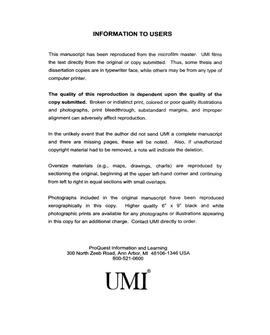| dc.contributor.advisor | Strevett, Keith, | en_US |
| dc.contributor.author | Hall, Freddie E., Jr. | en_US |
| dc.date.accessioned | 2013-08-16T12:18:15Z | |
| dc.date.available | 2013-08-16T12:18:15Z | |
| dc.date.issued | 2001 | en_US |
| dc.identifier.uri | https://hdl.handle.net/11244/312 | |
| dc.description.abstract | Coupling of an appropriate source emissions model and an atmospheric dispersion model represents a cost-effective and environmentally-responsible approach for meeting impact prediction and regulatory reporting requirements, as well as problem analysis and pollution prevention needs, associated with emissions of two chemical depainting agents [phenol and methylene chloride] from a liquid industrial wastewater treatment facility [IWTF]. This coupling study was conducted for the IWTF at Tinker Air Force Base [AFB] in Oklahoma City, Oklahoma. Phenol and methylene chloride are used as chemical depainting agents at the AFB, with the liquid effluent from such uses ultimately subjected to an on-base IWTF. Atmospheric emissions of the depainting agents occur from various unit processes in the IWTF. Use of the coupled model in the predictive mode is illustrated via the development of geographically-based profiles of the ground-level concentrations of phenol and methylene chloride in the nearby environment of the IWTF. Model validation is demonstrated via comparisons and statistical testing of receptor location predictions with comparisons and statistical testing of receptor location predictions with actual air quality data developed from discontinuous air sampling and analysis, and open-path monitoring based on Fourier Transform Infrared Spectroscopy. Finally, it is noted that the coupled model can be used for: [1] the conduction of site specific health risk assessments; [2] emissions reporting regulatory compliance determinations; and [3] evaluation of the air quality impacts of on-base process change scenarios, pollution prevention activities, and changes in the design or operation of the IWTF. | en_US |
| dc.format.extent | ix, 187 leaves : | en_US |
| dc.subject | Engineering, Sanitary and Municipal. | en_US |
| dc.subject | Engineering, Civil. | en_US |
| dc.subject | Air quality Oklahoma Oklahoma City. | en_US |
| dc.subject | Centralized industrial waste treatment facilities Oklahoma. | en_US |
| dc.subject | Volatile organic compounds. | en_US |
| dc.subject | Air Pollution. | en_US |
| dc.subject | Engineering, Environmental. | en_US |
| dc.subject | Tinker Air Force Base (Okla.) | en_US |
| dc.title | Coupled modeling of the air quality impacts of chemical depainting agents released from an industrial wastewater treatment facility. | en_US |
| dc.type | Thesis | en_US |
| dc.thesis.degree | Ph.D. | en_US |
| dc.thesis.degreeDiscipline | School of Civil Engineering and Environmental Science | en_US |
| dc.note | Source: Dissertation Abstracts International, Volume: 62-03, Section: B, page: 1493. | en_US |
| dc.note | Adviser: Keith Strevett. | en_US |
| ou.identifier | (UMI)AAI3009208 | en_US |
| ou.group | College of Engineering::School of Civil Engineering and Environmental Science | |
